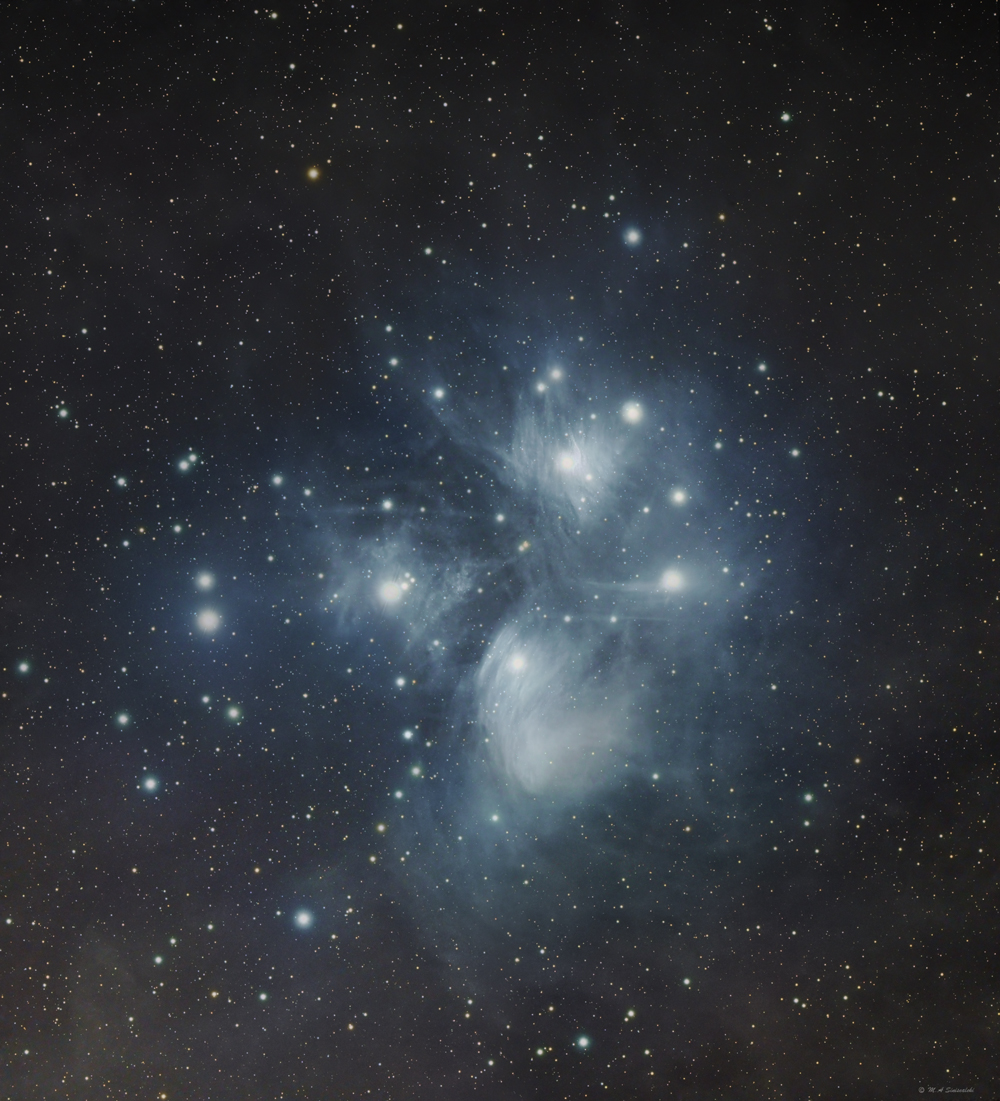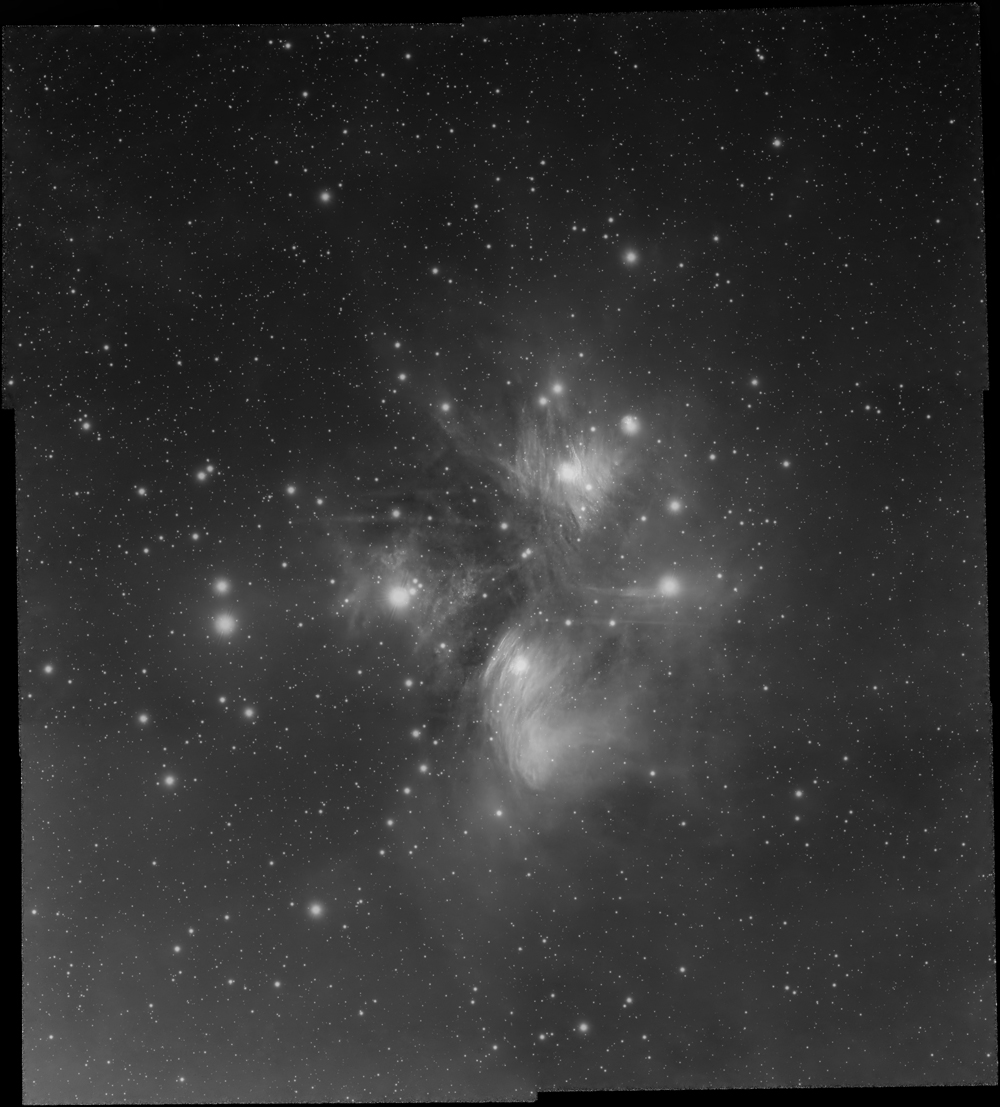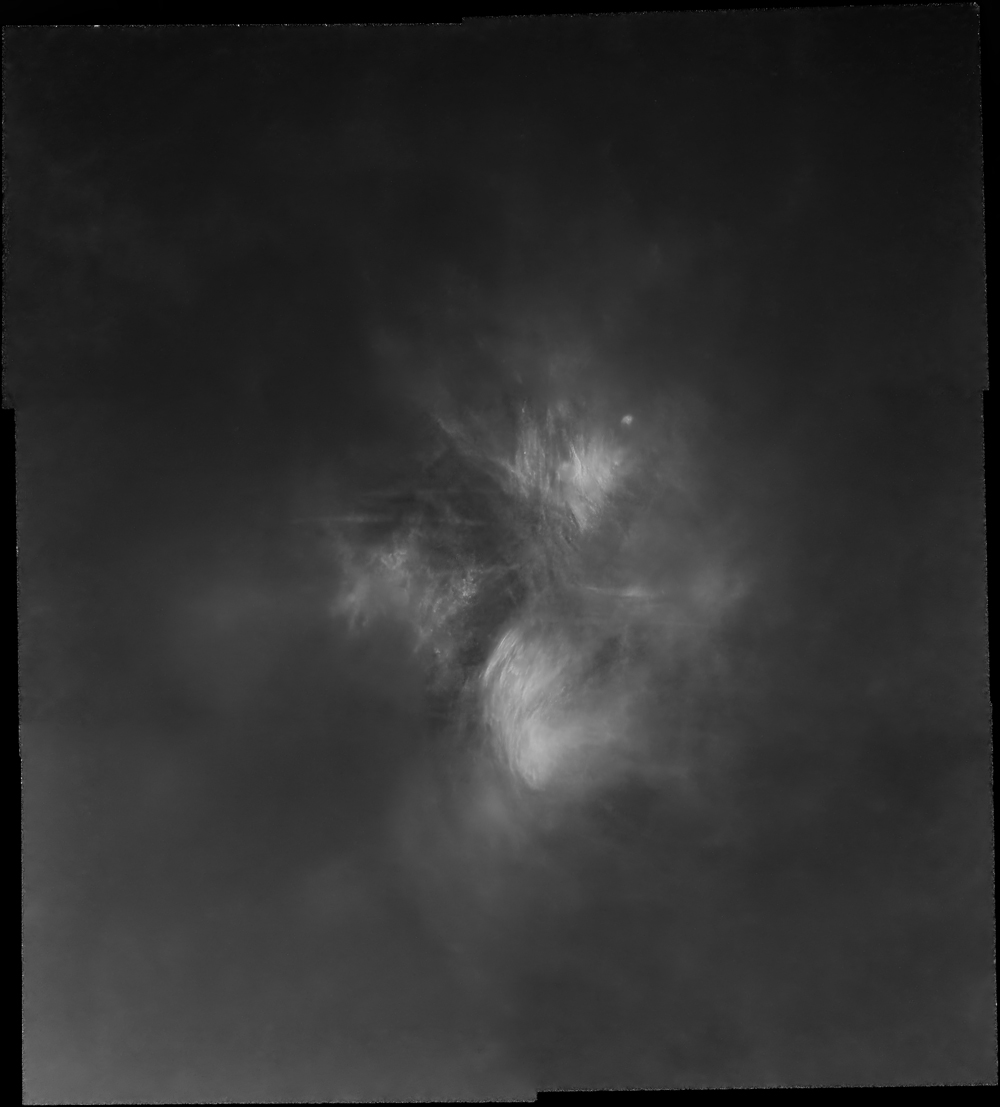© 2022 Michael A. Siniscalchi
Messier 45
Open Cluster in Taurus
RA 03h 47m 24s Dec: +24 07' 00" Distance - ~444 ly Size 110 arcminutes
Wikipedia-
The Pleiades also known as The Seven Sisters, Messier 45 and other names by different cultures, is an asterism and an open star cluster containing middle-aged, hot B-type stars in the north-west of the constellation Taurus. At a distance of about 444 light years, it is among the nearest star clusters to Earth. It is the nearest Messier object to Earth, and is the most obvious cluster to the naked eye in the night sky.
The cluster is dominated by hot blue luminous stars that have formed within the last 100 million years. Reflection nebulae around the brightest stars were once thought to be left over material from their formation, but are now considered likely to be an unrelated dust cloud in the interstellar medium through which the stars are currently passing.This dust cloud is estimated to be moving at a speed of approximately 18 km/s relative to the stars in the cluster.
Click on image for full size
Messier 45 position shown relative to our location (Sun) in the Milky Way Galaxy
Age: 135 million years
Galatic Longitude: 166.6
Galatic Latitude: -23.5
Distance from Galatic Plane:121 ly below the galatic plane
Above image and info provided by Our Galaxy 3D Atlas application and used with permission by
Otherwise
Post processed 6-panel luminance data used for the base.
Post processed 6-panel luminance data with stars removed to show the dust structure



